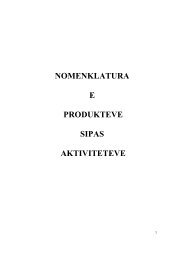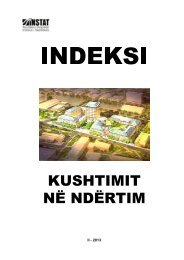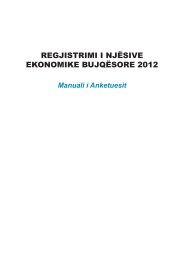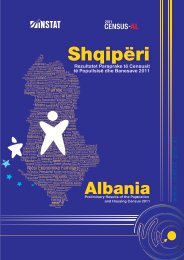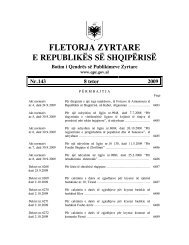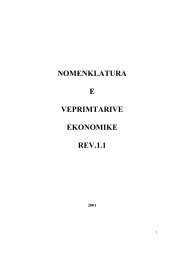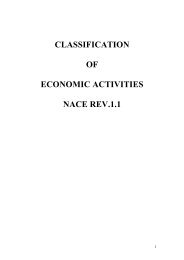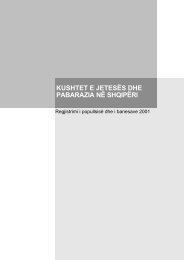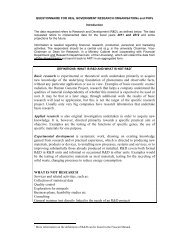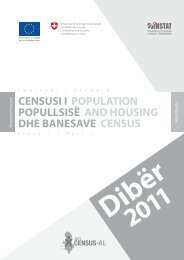Description of methods and sources for Albania - INSTAT
Description of methods and sources for Albania - INSTAT
Description of methods and sources for Albania - INSTAT
- No tags were found...
You also want an ePaper? Increase the reach of your titles
YUMPU automatically turns print PDFs into web optimized ePapers that Google loves.
IPA 2009 Multi-beneficiary StatisticalCooperation ProgrammeIt also provides the possibility to measure employment in the in<strong>for</strong>mal sector as wellas to define some categories <strong>of</strong> underemployment.The data obtained on labor from these <strong>sources</strong> are as follows:- Employment details <strong>for</strong> employees <strong>and</strong> self-employed (including employers,own account workers, unpaid family workers)The data are broken down by the economic activity according to NACE two digitclassifications. For the purpose <strong>of</strong> national accounts’ use the data are aggregated in 7macro branches in order to avoid the problem <strong>of</strong> misclassification <strong>of</strong> input labor byeconomic activities. (See Table 7.1.1, column 5). It is necessary to explain that“other service” macro branch does not include the financial sector, education, health,culture <strong>and</strong> public administration.7.2.3. Sources <strong>of</strong> data on the dem<strong>and</strong> <strong>for</strong> laborThe <strong>sources</strong> <strong>of</strong> in<strong>for</strong>mation on labor supply are annual Structural Business Survey<strong>and</strong> Annual Account Statements (AAS). Structural Business Survey (SBS) is anannual establishment survey, conducted on a yearly basis since 1997. SBS covers allactive enterprises in <strong>Albania</strong> except public administration <strong>and</strong> the financial,educational, health, cultural <strong>and</strong> agricultural activities. Data on SBS <strong>and</strong> AAS areuseful to identify the number <strong>of</strong> employed persons by size <strong>of</strong> enterprises.The following data on employment are gathered from this survey:- Annual average number <strong>of</strong> employees, self-employed <strong>and</strong> total employment.A methodology was implemented to gross up the input <strong>of</strong> labor declared byenterprises. This procedure is coherent to that used to gross up the economicaggregates (output <strong>and</strong> intermediate cost). Firstly, the number <strong>of</strong> input labor <strong>and</strong>enterprises in SBS <strong>and</strong> ASS is calculated together by branch <strong>and</strong> dimensional class.In this way we have obtained the “Observed input <strong>of</strong> labor in the observedenterprises”(OLOE).Secondly, the average number <strong>of</strong> employed people by the number <strong>of</strong> enterprises iscalculated underlying the Structural Business <strong>and</strong> ASS by branch <strong>and</strong> dimensionalclass.The averages established above, have been used to gross up the number <strong>of</strong> employedto the number <strong>of</strong> enterprises considered as non-active by SBS <strong>and</strong> active in NationalAccount. In this way we have obtained the “Non-observed input <strong>of</strong> labor in the nonobservedenterprises” (NOLNOE)The sum <strong>of</strong> number <strong>of</strong> employed in observed <strong>and</strong> non-observed enterprises gives thenumber <strong>of</strong> employed persons underlying in National Accounts. (See Table 7.1.1, col.1, 2, 3, 4)104/236



